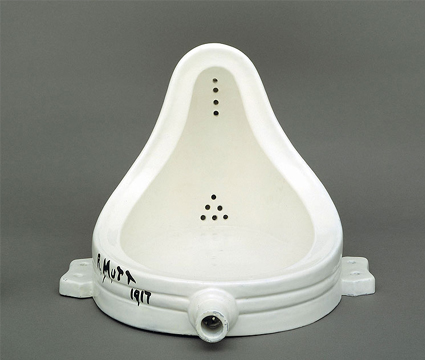What is it, exactly, that makes an object a work of art? The question was asked (and answered) most forcibly by Marcel Duchamp, when he submitted his Fountain to the Paris Salon of 1917. It consisted of a porcelain gentleman's urinal which Duchamp had signed using his pseudonym, R Mutt. This was the ultimate Dadaist gesture, Duchamp's way of letting the bons bourgeois know that he despised their values; his way of (metaphorically at least) urinating on the Salon and all that it stood for. The 1917 hanging committee rejected Fountain on the grounds that it was not sculpture, but plumbing. Art, however, would never be quite the same again.
Duchamp's ''readymade'', as he called it, is among the most subversive objects in existence. It is subversive because it is not a work of art - and yet it is, because he said so. At a stroke, Duchamp demolished upwards of 2,000 years of aesthetic theory, with its elaborate categories and hierarchies of value, and put in its place a simple assertion which brooked no contradiction: if I, the artist, say it's art, then it is. Duchamp later gave up art for chess. Having lit the blue touchpaper, he retired to a safe distance.
The memory of Duchamp's urinal, it is fair to say, has haunted the art of this century. It fades from recollection and then, suddenly, there it is again, a piss- take that continues to exercise the minds of each new generation of artists. The subject of a new book - Fountain, by William A Camfield, Houston Fine Arts Press, pounds 13.95 - it just won't go away. It is behind Warhol's designation of Brillo boxes as art; the Minimalists' assertion that piles of bricks or planks of wood could be art; the insistence of Conceptual artists...


